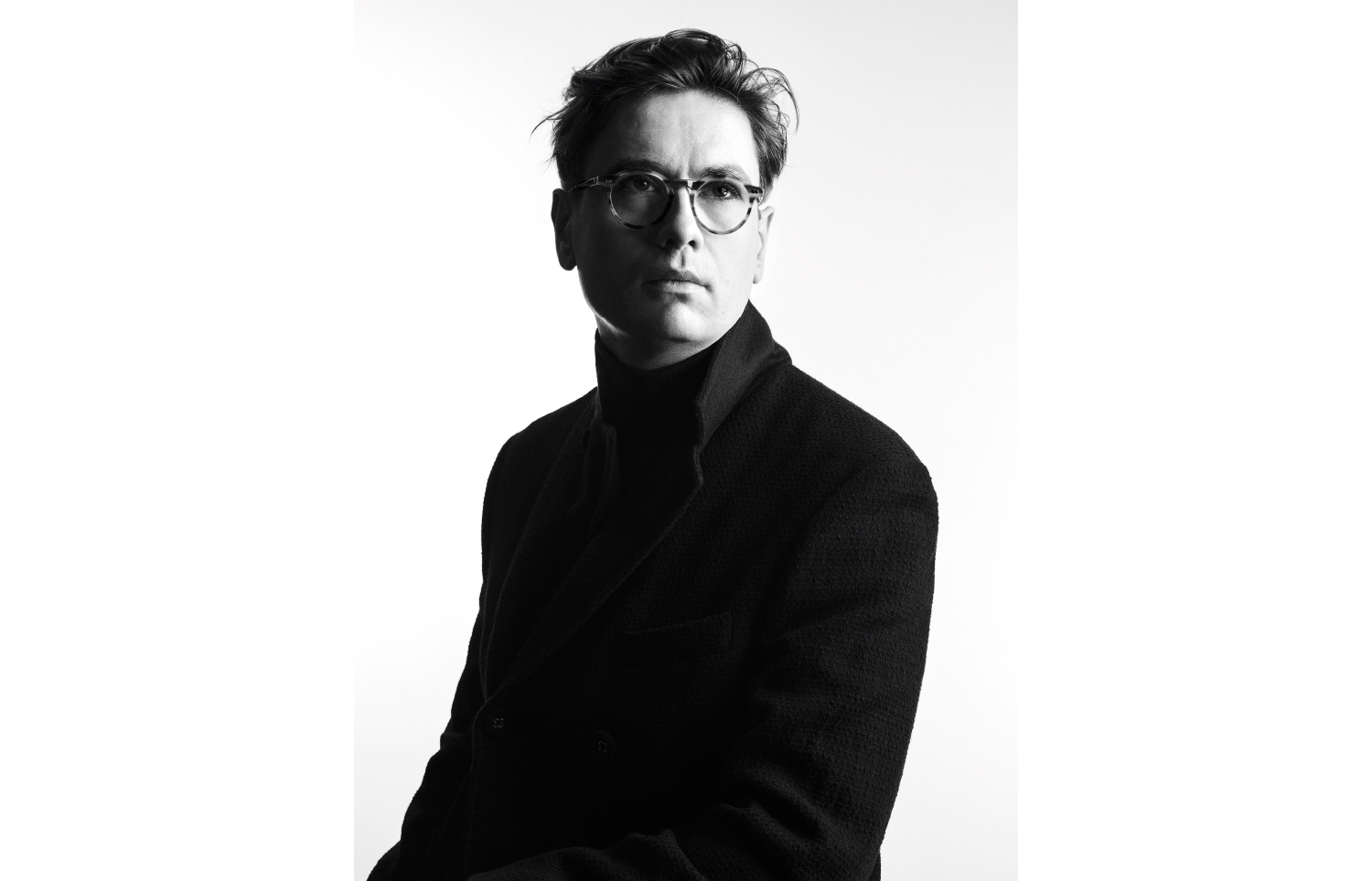At the BBC Proms this year, an Icelandic pianist dressed like a Wall Street broker played a slow movement from a Bach organ sonata that had the audience first gasping and then stamping their feet. This was an encore to a performance of the Schumann Piano Concerto that neither milked the poetry nor romped thrillingly through the finale – and that, too, nearly had the Prommers throwing their underwear at the shy soloist.
How do you explain the phenomenon of Vikingur Olafsson? At first glance, he fits the mould of the bespectacled scholar-pianist who recoils from vulgarity – a young Alfred Brendel or Richard Goode, say, whose Beethoven or Schubert cycles have the cognoscenti underlining felicities in the score.
‘The Goldbergs are the hardest piece. It’s like doing the Olympic gymnastics, but naked’
But Olafsson has recorded no complete cycles of the Viennese masters and never will. He was 32 before he appeared on a major label – Deutsche Grammophon, which is notorious for signing teenagers with transcendental techniques and then quietly dropping them. He has produced six complete albums in eight years and they don’t include a concerto. Nor – with one mighty exception – will you find the peaks of the repertoire: no Liszt Sonata or Schumann Fantasy in C, and nothing by Beethoven, Schubert or Chopin.
But you will find seven pieces by his friend the 98-year-old Hungarian composer Gyorgy Kurtag, whose fragments are as compact as Webern but glitter like Messiaen. In fact, you’ll hear them twice on his album From Afar, because Olafsson gives us a playlist of Bach, Schumann, Brahms, Bartok, Kurtag and Adès on a Steinway and then exactly the same pieces on an upright piano. And DG indulged him, because Vikingur Olafsson’s tracks have been streamed nearly a billion times.
He is a cult pianist. This isn’t to say that he’s more famous than DG’s two other stars: Yuja Wang, whose gossamer textures defy belief, and Lang Lang, whose tragic crossover antics are big in China. But Olafsson’s cult is the most idiosyncratic since Glenn Gould’s: he draws millions of people into music outside their comfort zone (and which DG would never encourage its competition-winning brat pack to record). Gould’s breakthrough was his 1955 Goldberg Variations, which the 22-year-old Canadian played with such dazzling clarity that it quickly sold 40,000 copies. Olafsson also created a sensation with the Goldbergs – but last year, facing recorded competition from more than 400 pianists and harpsichordists.
By then there was already an Olafsson cult. If you want to know why, listen to the second track of his 2018 Bach album, an arrangement of the chorale prelude ‘Nun freut euch, lieben Christen g’mein’. The right hand plays semiquavers as fast as possible while four fingers of the left hand keep up a staccato accompaniment and the thumb takes the hymn tune. DG filmed it and posted it on YouTube. Olafsson wipes the floor with everyone else. His blurred fingers sound impossibly precise; his thumb actually sings, prompting some moron in the comments to accuse him of overdubbing it.
The piece is a bummer for amateurs; I’ve been tormenting my neighbours with my fumbled rendition for months, and so when I meet Olafsson in a hotel in Bloomsbury I ask him where he places his second and third fingers in the rollercoaster opening bars. The poor man thought he was giving an interview, not a free piano lesson, but I knew it was safe to ask because he’d just proved how chilled he is by mopping up the remains of a cup of coffee I’d sent sprawling over the table. (‘It’s OK, I have young children.’)
I tell him about the YouTube accusation of cheating. ‘No!’ he says. ‘That hurts because I worked so hard on it. The difficult thing is the left hand, but the right hand fits like a glove. It’s just a matter of fingering.’ And he shows me, tapping it out on the damp glass of the table.
‘How do you practise?’ he asks, and then he tells me his approach. ‘Slowly, and without pedal, and sometimes with separate hands, with a metronome if necessary. Rachmaninov, Horowitz and Gould – the one thing they had in common is they loved the metronome. So did Dinu Lipatti, one of my icons. If you use it correctly, it can give you a sense of sculpture in your sound and in your timings.’
When I reviewed Olafsson’s Goldbergs for The Spectator, I thought their Schumannesque fantasy was unique but that other performers could match him for dexterity. But after repeated comparisons I’m not sure anyone else’s fingers have flown so fast while shooting up and down the dynamic spectrum. And it’s interesting how many pianists won’t risk the Goldbergs, because they expose hidden weaknesses in supposedly impregnable techniques.
He agrees: ‘It’s the hardest piece in the repertoire. It’s like doing Olympic gymnastics, but naked.’ How did he get there? ‘It’s about working harder than you think you need to get those results. It’s easy for me to get to 97 per cent of my ability, but that last 3 per cent is an ongoing battle. It’s timings, it’s under your fingernails, it’s the millimetres that control the sound narrative on your piano.
‘I don’t like the piano unless you can get this texture, this polyphonic transparency. I hate two-dimensional piano sound. You need to control every single sound in every single chord you make. So if you’re playing a four-note chord, all four of those notes are sculpted to within the decibel.’
Can he give me an example of something that’s pushed him to the limit? ‘My first real struggle with sound was when I was 13 and heard Benno Moiseiwitsch play the Fourth Ballade of Chopin. I was blown away. How can the man make the piano sound so velvety? Unbelievable! I would spend hours just on the left hand of the main theme and my mother would hear me and say, “You’re always practising your pianissimo, you also need to be able to play loud. Why don’t you play Liszt’s Transcendental Études?”
‘But I kept spending all my time on my soft palette. Later I muscled up, but my early love was always for the palette that lies somewhere between triple piano and pianissimo, because that’s where the magic is.’ And is there a style of piano playing he dislikes? ‘Oh, certainly. What I look for in other pianists is honesty, truthfulness, a search for something that is not entirely about themselves. So when I see people going in the direction of Liberace, I cannot stand it and I hate it so much that I start to shake. I’m not going to name names.’ He doesn’t have to, but then he adds another category: ‘I also hate it when people become caricatures of themselves. It’s so easy when you turn 40, and I’ve just turned 40, to turn yourself into a routine luxury product that’s being sold for ever higher prices. I’m drawn to people who challenge themselves their whole lives and try different things – people like Sviatoslav Richter. It’s the same with composers like Stravinsky, who had these beautifully different chapters in his life, artists like Picasso and Beethoven and actually Mozart, who very actively challenged their own norms.’
But Olafsson hasn’t recorded any Beethoven, and like Richter there are sonatas he finds too boring to play. ‘Beethoven didn’t think of his sonatas as a group of 32. Likewise I won’t play all the Bach inventions and sinfonias. I’m against automatic programming.
‘If someone had told Chopin that people would be doing recitals of all the nocturnes, he would be like, “What the hell, why would you do that?” He never even played the Preludes as a set himself, he would just take two or three. Mozart’s programmes were in a way the original playlists. An aria here,
a movement there, a repeat of the movement if people applauded – it was so free. But I am looking in the direction of Ludwig van, I can tell you that. Now that I’ve played the Goldbergs 90 times around the globe I realise that without them there wouldn’t be these late Beethoven sonatas. Look at the citation in [Beethoven’s] Opus 109 to the first canonic variation in the Goldbergs. It’s almost a love letter from Beethoven. In the ‘Arietta’ of Opus 111, the greatest sonata movement of all time, that is the only set of variations that can claim to equal the Goldbergs because it goes almost outside the physical world.’
An Olafsson Opus 111 is a fascinating prospect, particularly as he’s ‘not terribly fond’ of any – any! – of the hundreds of recordings out there. But there will also be many more short pieces to come, because he thinks brevity is underrated.
‘My love is for the short story, where you can say so much in a few words, or in music with a few sounds.’ Also, he draws daily inspiration from the encores and single movements recorded on 78s by the historic pianists he calls ‘my people’ – Moiseiwitsch, Cortot, Friedman, Hofmann and Rachmaninov. They don’t sound like Olafsson, of course, but they could take your breath away by shifting from very quiet to extremely quiet.
That’s what we heard in the Bach encore in the Albert Hall. The piano swelled to a tremendous volume at the climax, but somehow the softest polyphonic layers also penetrated that cavernous acoustic and reduced members of the audience to tears. As he says, it’s the millimetres that matter.
Vikingur Olafsson plays the Royal Festival Hall on 1 and 6 November.









Comments